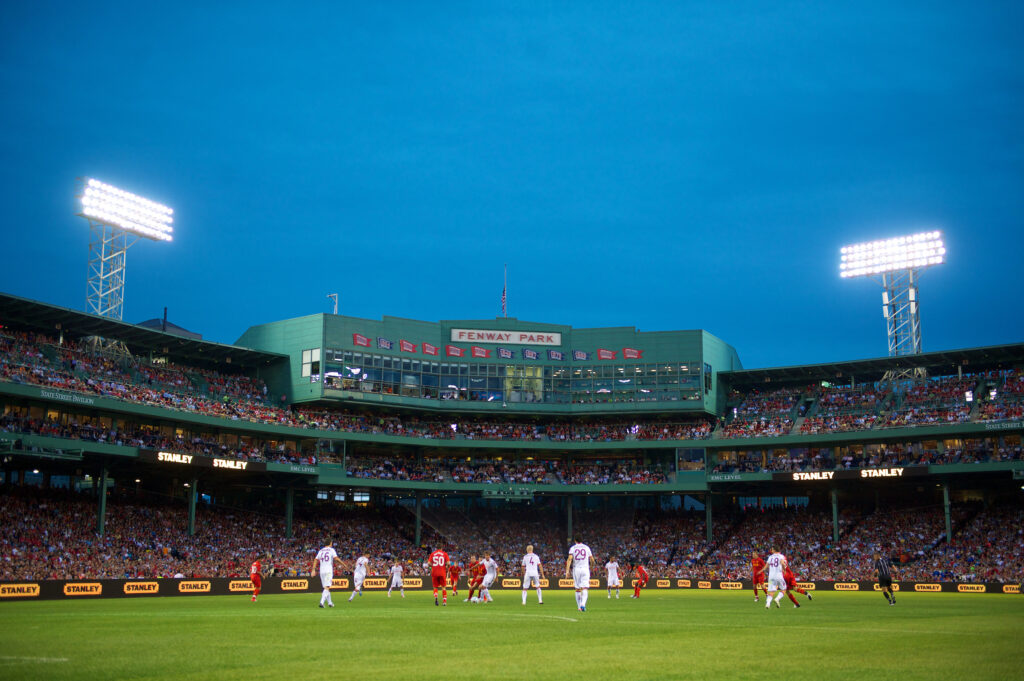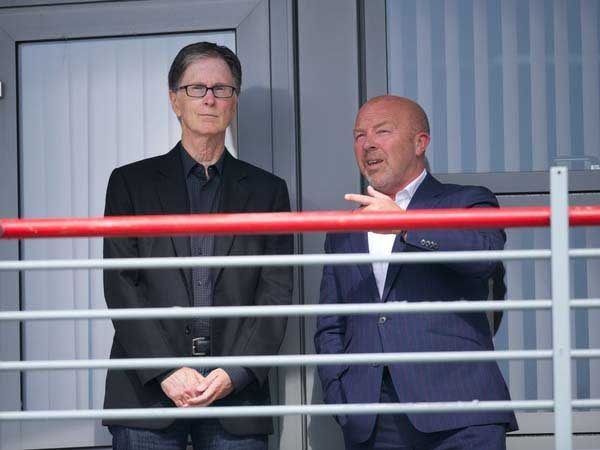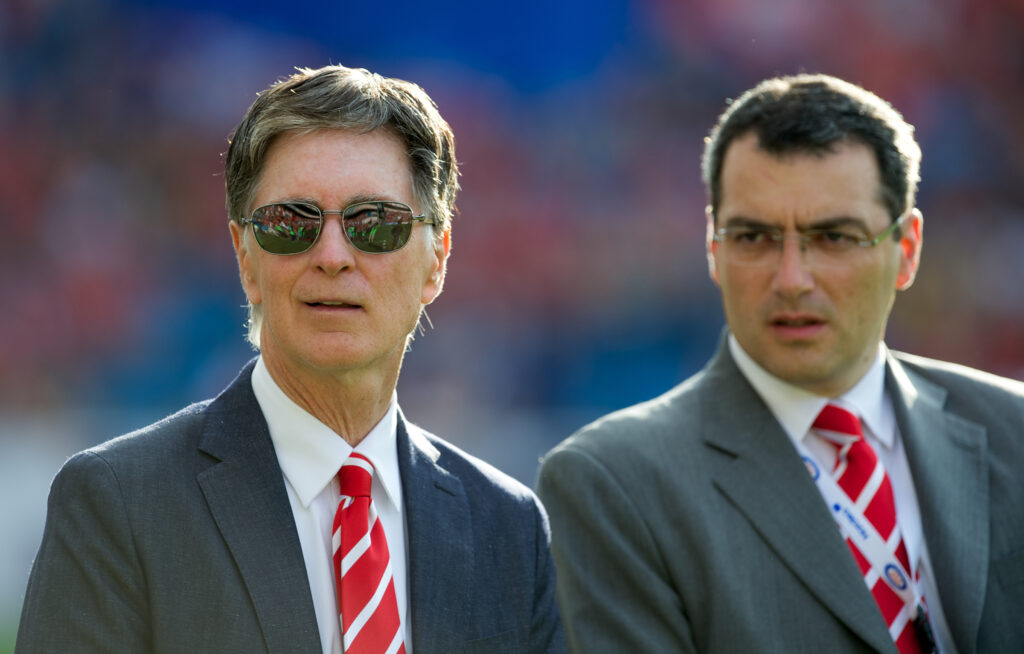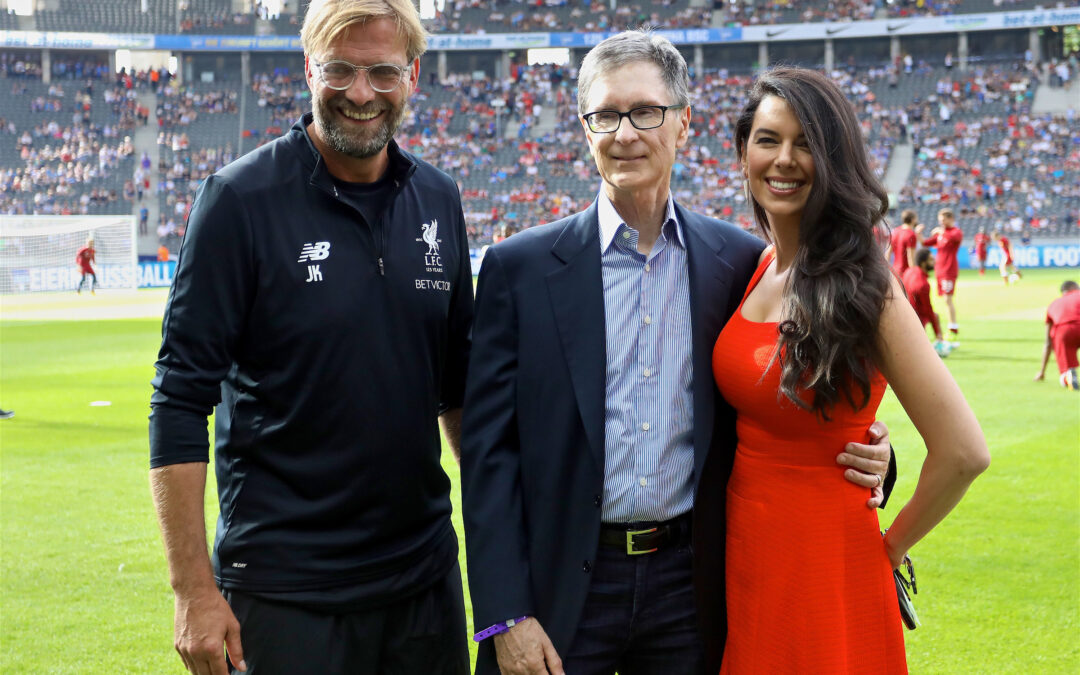IT is well known that Liverpool FC’s owners are based in Boston, they own an iconic Major League Baseball club and that, in the 16 years they have been in that position, they have achieved substantial success with three World Series wins between 2004 and 2013 — an unprecedented record given the 86-year drought the Red Sox endured prior to 2004, writes STEVE TANCOCK.
It is also, in my perception, the view of the majority of Liverpool fans that The Reds are the poor relation in this ownership arrangement. I don’t agree and will show this by examining in detail what has happened in Boston since they took over and examining what has been good and bad in that ownership in the eyes of the match-going members of “Red Sox Nation”.
To start off I’m going to look back over baseball’s recently concluded off season and Fenway Sports Group’s position at the beginning and end of that period as spring training (pre season) begins.
To recap on last year; Boston won their division for the second year running ahead of the Yankees to qualify for the end of season playoffs, but lost for the second year running in the first round, this time to the eventual World Series winners, the Houston Astros.
For Boston fans, qualification for the playoffs is seen as the minimum requirement for a successful season, but the manner of the defeat to the Astros was unsatisfactory to the fans, who had suffered a season of underperformance by the team. The widely held view was that the other teams in the American League East lost the division, as opposed to Boston winning it.
Imagine qualifying for the Champions League in fourth on the last day of the season, despite losing at home to Middlesbrough, before getting knocked out in the qualifiers by Hoffenheim.
Baseball, like American Football, is designed — through its draft system, its revenue sharing arrangements and salary caps — to ensure the 30-team league does not see the same teams winning each year. On the whole, this has been successful. The aforementioned Astros win last year was the first in their history, but less than three years ago they were one of the worst teams in the league.

BOSTON, MA – Wednesday, July 25, 2012: Liverpool take on AS Roma during a pre-season friendly match at Fenway Park, home of the Boston Red Sox, the second match of the Reds’ North American tour. (Pic by David Rawcliffe/Propaganda)
The so-called big market teams — the New York Yankees, LA Dodgers, Chicago Cubs and Boston — tend to dominate because they attract the biggest media and sponsorship revenues, and so can afford to pay the biggest wages.
One of the most enjoyable parts of being a Red Sox fan since 2004 has been to watch the tortured failure of the Dodgers, Cubs and, in latter years, the new kid on the block the Washington Nationals. The ebb and flow of a baseball season has added to the agony these teams have suffered either failing to make the playoffs or falling short within them.
New York, for who success is defined as a World Series win, were, after two seasons of serious underperformance, clearly going to make big moves over the winter and the Red Sox would need to do likewise. So the off season began with a mixture of anticipation as to what the ownership would do to bolster the squad, and trepidation as to what would happen in New York.
Within days of the season ending, the Sox fired their manager John Farrell, who was seen as a dead man walking from the mid season onward (in football parlance, he had clearly lost the dressing room) and hired Alex Cora, a former Red Sox player with no Major League managerial experience to the top job in his place.
Cora was bench coach for the Astros in 2017 and is widely regarded as a modern, progressive manager. A move not dissimilar to the hiring of Brendan Rodgers in 2012. But throughout the autumn and into winter (the fabulously named “hot stove season”) no player acquisitions materialised in Boston.
The trade system in baseball is very different from football’s transfer system. Teams do not pay each other transfer fees but instead agree between each other to move players around. Anachronistically, the players have very little say in this process while they are under contract.
It is quite common for a player in such a situation to move at very short notice with no say in the matter, as happened in 2004 for the Red Sox’s star player, who found out on his way to that day’s game that he has been traded, he had no choice but to pack up his locker, jump on a plane and meet up with his new team — and even play for them that same evening.

FSG’s John Henry at the Academy with Frank McParland (Pic: David Rawcliffe)
When a player’s contract ends and he becomes a free agent, all the power switches the other way and he can choose where he goes and command vast salaries of upwards of $25million per year over a five or seven-year period with a new team. It is here that the rich teams are able to accumulate the proven talent and their position as World Series contenders.
So everyone expected the Sox to make a big move to bolster their offence — having ranked last in home runs in the majors in 2017. The anticipated target was free agent JD Martinez, a late developing power hitter thought to be ideally suited to Fenway Park. Martinez’s agent anticipated the deal was going to happen sooner rather than later and expected a seven-year deal worth in excess of $25m per year. This was especially surprising since the Red Sox’s general manager, who is famed for his big-name, big-price signings, had signed Martinez when he was GM at Detroit and is known to be a fan.
But nothing happened. The Red Sox were not comfortable with the seven years Martinez was demanding given his age and the anticipated fall off for hitters of his type in their mid 30s. On the flip side, the baseball world agreed Martinez and the Red Sox were the perfect match and pretty much advised FSG to pay what it takes to get him to Boston.
Meanwhile the arch-rival Yankees, were making their move. On December 8, they signed Giancarlo Stanton, the National League’s Most Valuable Player in 2017, to a “blockbuster” contract from under the nose of the St Louis Cardinals. (Imagine Manchester City signing Harry Kane for £250m.) Heads fell off in Boston, while the hated Yankees anticipated the beginning of another dynasty. The pressure on ownership in Boston was mounting by the day.
All over the Christmas period in Boston, in the media, among the fans and especially on their sports talk radio (which is a joy to behold in itself) heads were falling off. FSG were under immense pressure to make a signing, any signing. “Forget Martinez just get someone because the Yankees have,” was the gist of the Boston airwaves. But FSG refused to budge, they made hardly any comment in the media and no serious links to other players emerged.
Roll forward six weeks to February 19. Spring training is about to start and the Yankees are parading their new superstar when out of nowhere Boston announce, subject to a medical, that they have signed Martinez on a five-year $110m deal with a two-year break clause.
This is clearly a deal where the Red Sox have come out better and that is clearly because ownership were prepared to wait and allow market forces to work in their favour. Remember John Henry made his fortune out of anticipating market movements and this experience, together with him being a disciple of moneyball, underpins the Red Sox strategy.

OSLO, NORWAY – Monday, August 1, 2011: Liverpool’s owner John W. Henry with Director of Football Strategy Damien Comolli before a preseason friendly match against Valerenga at the Ulleval Stadion. (Photo by David Rawcliffe/Propaganda)
This week, the baseball media have been lauding the Red Sox for the deal they have done while the mood in Boston has, as it tends to do in Liverpool fan base from time to time, flipped from the depths of despair to excitement, anticipation and a belief that the Red Sox and Yankees are very well matched for the coming season.
So what does this tell us in terms of Liverpool’s approach to the summer? How can the off-season experience of Red Sox fans help Reds manage their expectations through until August?
The parallels between the Red Sox off-season dealings, the Virgil van Dijk signing, the apparent refusal to pay over the odds to get Naby Keita early, and the position on Riyad Mahrez and Thomas Lemar are striking. It seems to me that in both Boston and Liverpool, FSG are sticking to a strategy which is to identify their targets and use the market movements to put the buyer in the best position.
FSG are clearly not afraid of paying the big bucks as the van Dijk and Martinez signings testify but the fit has to be right. So if Liverpool supporters are expecting acquisitions for the sake of it, it will likely not happen for the reasons set out above.
The more I think about it, the more value I see in analysing what is happening in Boston and trying to translate this into predictions of what will happen in Liverpool.
In conclusion, one thing is abundantly clear. Until Liverpool win some silverware even the most ardent advocates of Henry’s ownership group will have to continue to work hard to retain their belief and convince the more sceptical among us.
I hope they are able to turn doubters into believers.
On this week’s FREE show we asked social media for talking points to discuss, and it’s fair to say there was a lively debate on a wide range of issues about Liverpool FC. If you enjoyed and don’t already subscribe to TAW Player, why not give it a go for a just £5 a month?
“I think [Klopp is] a genuine world class talent. I think he’s built a team shaping to be a fantastic team, that plays some of the best football i’ve seen Liverpool play.” 👊
“I think he can take us where we want to go.”
🗣 Subscribe: https://t.co/eTmRQkhp95 pic.twitter.com/aFEzBqcSXA
— The Anfield Wrap (@TheAnfieldWrap) 20 February 2018
Recent Posts:
[rpfc_recent_posts_from_category meta=”true”]
Pics: David Rawcliffe-Propaganda Photo












FSG OUT
Good piece mate.
I’m not sure at all about this. While they waited on Martinez, this is largely due to a suspected collusion from owners whereby many free agent players are still unsigned in a bid to drive down prices.
Red Sox have plenty of history of flashy signing that make little sense. Pablo Sanodval is still being paid $18m per year to not play for the Sox. They will have the highest payroll in mlb this year but are not even the favourites in their division.
There are some parallels between the 2 clubs, but it’s certain to me as a baseball fan that their main focus is on the Red Sox.
One clarification is needed – the Yankees didn’t sign Giancarlo Stanton, they traded for him by sending some players to the Miami Marlins in exchange. Either way, the Red Sox suck. YNWA
Thanks for the clarification. I didn’t want to get bogged down explaining the difference between a transfer and a trade but noted.
Would like be to get into Agent Jeter tanking the Marlins and coincidentally sending Stanton to the Bronx as pretty much the first thing he did. Maybe another day…..
Cashman said yesterday the Yankees are “The Little Engine that Could” which is at best delusional in my opinion.
Let’s “play ball” and see how it goes. Let’s Go Red Sox?
Great article but only difference is the Red Sox wouldnt loose a player like Suarez or the magician…. also they sign the best when a viable… Liverpool seem to loose there best and only be able to sign the best of the second tier players
Well, according to the piece the first thing fsg did in 2004 was to trade their star player…
johnny damon was a hero. he left for the yankee$. jacoby elsbury was an animal in his prime. he left for the yankee$. ever heard of babe ruth? well he was sold to the yankee$. johnny damon was our suarez. ellsbury was our magician. babe ruth was messi, pele, and maradonna with a sprinkle of both ronaldo’s. yes i know babe ruth wasnt sold by FSG but i hope you get my point.
Excellent piece. Nice to see a level headed article about the purchase of players and how FSG are making great progress toward putting LFC back on top. The strides made since they took over in terms of bringing LFC into the current age in terms of commercial dealings and the redevelopment at Anfield are such important steps. On top of that, their transfer dealings particularly since Klopp has taken over have been masterful. There is a crowd that have been screaming buy x-player, buy y-player, buy the whole other team and just makes them sit on the bench when they play us. This clearly isn’t what FSG and LFC are about. FSG are trying to grow a sustainable successful team and it makes things so much sweeter when success is earned not bought with oil money.
You’re a naive idiot. Why don’t you go out and find a rainbow. FSGs end game is ultimately all about
safe profit
Well that particular rainbow has 3 World Series and counting after an 86 year wait …….
Interesting read. But, bit of a quick ending after a big build up. Looking forward to part two.
Let’s see how the season develops. The Stanton v Martinez wins above replacement will be worth watching. I plan to revisit this a couple of times more so let me know what else you’d like me to cover. Thanks
Complete naive sicophantic horse shit!!!!!!!!
Great comment. Well thought out and reasoned rebuttal to the article. Glad you didn’t resort to aggressive, emotional rants, because then you’d lose any credibility
good article mate…nice comparisons. FSG won’t fully win over both fan bases but overall they’ve done wonders for both clubs.
Good analysis and article and as an American Boston sports fan and a Liverpool fan because of FSG, I always wondered how one effected the other. But as a Boston sports fan, you cannot be naïve; the Sox and FSG have never had a problem splashing cash on the “best” players and many of these players never even came close to matching production. Here are some, and I’ll even do the conversions from Dollars to Euros for that time period and then make some parallels:
Rick Porcello (2014-2015) – €74.25 M
Pablo Sandoval (2014-2015) – €85.5 M
Hanley Ramirez (2014-2015)- €79.2 M
Carl Crawford (2010-2011) – €102.24 M
Adrian Gonzalez (2010-2011) – €110.88 M
David Price (2015-2016) – €156.24 M
I know FSG didn’t own Liverpool in 2006 but during that offseason they spent a total of €81.3 M on Daisuke Matsuzaka, which included €40.65 M in a TRANSFER FEE. In comparison, Liverpool spent €43.56 M on total transfers that year.
They spent €238.95 M on three players in the winter before the 2015 season which is right after Luis Suarez was sold to Barcelona. Now there might of been nothing they could do to keep Suarez from forcing the move but they never brought in another comparable talent to replace him.
Now FSG are giving JD Martinez €90.2 in a deflated market (most likely due to the pending free agency of Bryce Harper and Manny Machado next off season). Martinez has never really been the hitter they are trying to make him seem like, he was almost out of the league a handful of years ago, his bat just caught fire the last 3 months of the MLB season…and who did they just sell to Barcelona? Coutinho for €142 and never gave Klopp a replacement.
The Red Sox and FSG have never been about building their group through their “farm” systems before now. This is really the first time I remember in two decades that over 50% of our best players are “home grown” talents.
I hope I am wrong but in my own opinion, FSG will continue to search for value in the “bargain bin” in terms of Liverpool replacement players when talent is sold, van Dijk is an aberration, maybe a pacifier for Klopp to keep him from leaving.
I know this is a lot of information, but feel free to use it to flame FSG in your next comparison article.
Correction: in 2006 Liverpool spend €63.5M in total transfers. Calculation error.
Andre. Thanks for your informative response. I am doing some reading for future articles and noted Michael Holley in, “Red Sox Rule” says when comparing Boston to Oakland in relation to the Francona hire was that the Red Sox can afford to make expensive mistakes.
“FSG are clearly not afraid of paying the big bucks as the van Dijk and Martinez signings testify but the fit has to be right. So if Liverpool supporters are expecting acquisitions for the sake of it, it will likely not happen for the reasons set out above.”
This is such a ridiculous premise, one that seems to be getting used quite frequently nowadays in order to defend our lack of transfer business.
No serious club in Europe buys players ‘for the sake of it’. It’s also insulting and dismissive to suggest that people who are angry/disappointed we didn’t sign anyone in January wanted the club to act like that.
If you’re selling a prized asset for £142m in the middle of a season, it is not unreasonable for fans to think the club should have a plan in place to replace them. When people call for us to ‘sign somebody’, or ‘get another body in’, that’s not them asking for us to spend ‘for the sake of it’. It’s wanting the club to act like a grown up, ambitious, football club that is determined to win.
We’re fans, we’re not supposed to have a scouted list of players who ‘fit’ to give the club. That’s their job. If they don’t have that, or they’re not willing to pay the price for the people on it; that’s on them.
Whatever happens for the rest of this season, our squad is weaker than it was on 7 January. Everyone in a management position and above at the club is responsible for that.
How is it weaker? Van Dijk in and coutinho out. It’s different but not necessarily weaker
We signed van Dijk before Coutinho left on 8 January. Since we signed van Dijk, Coutinho and Sturridge have left from the first team squad, and no one else has come in. That’s weaker.
You lost me at saying the Chicago Cubs are one of the big perennial power clubs. You clearly don’t know your stuff.
To clarify, the article says that “The so-called big market teams — the New York Yankees, LA Dodgers, Chicago Cubs and Boston — tend to dominate because they attract the biggest media and sponsorship revenues, and so can afford to pay the biggest wages.” I specifically didn’t say WIN for exactly that reason. And I go on to say that …. “One of the most enjoyable parts of being a Red Sox fan since 2004 has been to watch the tortured failure of the Dodgers, Cubs…. “. The fact that the Cubs are one of the richest clubs means that like the Red Sox, Yankees and Dodgers tend to pay the biggest contracts – i.e. dominate the market. That doesn’t guarantee success though – just ask Dodgers fans last October.
Thanks Steve. FSG have been good owners by and large IMO and there will always be negativity towards owners from some pockets who are either anti-owner or insistent on limitless acquisition.
They took over this club when we needed someone – anyone to, and acted professionally throughout that process and its aftermath.
They moved on exchanging Rodgers for Klopp at the right time, before Utd, Arsenal or another CL team snapped Jürgen up. A lot of LFC fans thought Brendan still had enough credit in the bank after the 2013-4 season, but history suggests it wasn’t about him, it was just about getting Klopp.
They were pro-active in signing Bobby Firmino and Naby Keita, they have spent handsomely (in a pre-Neymar sense) acquiring Mané, Salah, VVD, as well as buying quality from the lower shelves in Robinson.
They held their ground as much as possible with Suarez and Coutinho and in the latter case got the right price – still think they could have got a lot more for Luis.
They tried and failed to get replacements for Coutinho in January, but only because everyone saw our thick wad from selling Phil and bumped their prices up by £70mil, and I’m happy that FSG weren’t desperate enough to pay those silly fees rather than wait, considering we can only really win the CL, not the premier league this season.
They’re not perfect, but overall, I don’t really think Liverpool fans have much cause to complain.